2014 Yuexing Electronic Monolithic Product Testing Report II
Open the hood, that's it. This is the 4A13 engine.
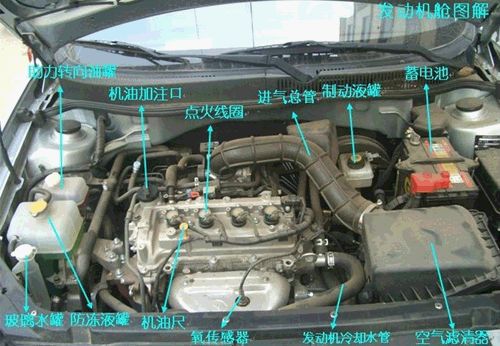
Air filter: The function is to filter the dust and impurities in the air, so that clean air enters the engine, which is very important for the life and normal operation of the engine. If there are too many dust impurities adsorbed by the air filter, it will be blocked and affect the engine work, so it must be replaced regularly. If driving in a place with a lot of dust, such as a place with sandstorms, the cycle of replacing the air filter should be shortened.
Battery: Needless to say, it is to store electrical energy. It is generally a lead storage battery, and the electrolyte is dilute sulfuric acid.
Brake fluid: The brake fluid that is usually said. Now the brakes of the car are generally hydraulic, that is, the brake fluid is used to transmit the force of the brake pedal to the brake disc.
Ignition Coil: The low voltage is converted to a high voltage, and the spark plug is discharged through the spark plug below it to ignite the combustion of the oil and gas mixture.
Engine oil: This does not need to be said to be a mineral or synthetic oil that lubricates the seal. If the engine lacks the lubrication of the oil, it will cause serious problems such as pulling the cylinder and holding the tile.
Power steering oil: Now the steering boost of a car is generally a traditional hydraulic booster. Since it is hydraulic, the oil medium is needed. Of course, some cars have begun to use electric power, which is also the future development trend.
Antifreeze: The circulation of the channels in the radiator and the engine cylinder. The liquid medium used to cool the engine, mainly water and additives. Because of the antifreeze function, it is called antifreeze.
Glass water: Everyone in the world knows that it is used for glass cleaning.
Dipstick: A ruler that measures the amount of oil. When using the engine, first turn off the engine, pull out the oil dipstick, wipe the oil with a clean paper towel, then insert and then pull out, look at the oil level of the oil, must be between the two upper and lower scales on the ruler, not much It can't be less.
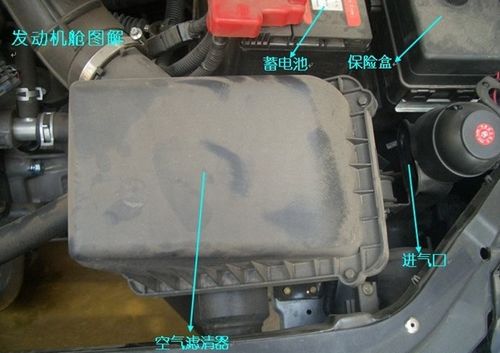
Fuse box: There are many fuses for electrical equipment, as well as relays. There are two fuse boxes in the small F, and the other is in the lower left of the cab driver. See the car manual for details.
Intake: The inlet of the engine intake, this is optimized, the position has been improved a lot, the position of the air intake of the old car is relatively low, the engine is easy to enter the water when wading. The position of the air inlet is the limit of the wading depth of the car and must not be exceeded. Once the engine enters the water, the consequences are very serious~!
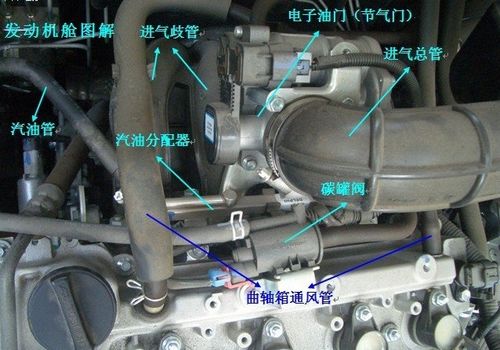
Electronic throttle: It is said that it is a throttle. In fact, it has nothing to do with oil. It is connected to the intake manifold and the intake manifold. The engine intake is controlled, so the correct statement should be the electronic throttle. The engine control module calculates the fuel injection amount based on the intake air amount, so that the engine speed and output power can be controlled. There is also a pull-line throttle, which uses a cable to control the throttle opening. Although the power does not directly lag behind the electronic throttle, the electronic throttle technology is high in content and fuel-efficient.
Intake manifold: An air intake manifold that branches from the intake manifold to each cylinder. Although it is a pipe, it is a technical know-how, such as a variable intake manifold.
Carbon canister valve: The carbon canister adsorbs the gasoline vapor in the fuel tank. After the canister valve is opened, the engine will suck the gasoline vapor adsorbed by the activated carbon in the carbon canister into the intake pipe, and finally participate in the combustion. This will not only help the environment, but also save a little oil.
Gasoline Dispenser: Distributes gasoline to each injector, and the fuel nozzle is connected underneath, and it is blocked and invisible.
Crankcase ventilation tube: the right side is the intake pipe, and the left side is the exhaust pipe, which serves to ventilate the crankcase.
Specific details: When the engine is working, there is always a part of the combustible mixture and exhaust gas smashed into the crankcase through the piston ring. When the gasoline vapor in the crankcase is condensed, the oil will become thinner and the performance will deteriorate. The exhaust gas contains water vapor and sulfur dioxide. The water vapor condenses in the oil to form a foam, which destroys the oil supply. This phenomenon is particularly serious in winter; sulfur dioxide forms sulfurous acid in contact with water, and sulfurous acid encounters oxygen in the air to form sulfuric acid. These acidic substances The appearance of the oil not only deteriorates the oil, but also causes the parts to be corroded. As the combustible mixture and exhaust gases get into the crankcase, the pressure in the crankcase will increase and the oil will seep away from the crankshaft oil seal, crankcase liner, etc. The oil vapor that is lost to the atmosphere will increase the engine's pollution to the atmosphere. The engine is equipped with crankcase ventilation to avoid or alleviate the above phenomenon. Therefore, the function of the engine crankcase ventilation device is: 1. Prevent the oil from deteriorating; 2. Prevent the crankshaft oil seal and the crankcase liner from leaking; 3. Prevent various Oil vapor pollutes the atmosphere. Crankcase ventilation includes natural ventilation and forced ventilation. Modern gasoline engines often use forced crankcase ventilation, also known as PCV systems. When the engine is working, the intake pipe vacuum attracts fresh air into the cylinder head cover through the air filter and air hose, and then enters the crankcase through the cylinder head and the hole in the body. After the fresh air in the crankcase is mixed with the crankcase gas, it enters the intake pipe through the cylinder head cover and the crankcase gas hose, and finally enters the combustion chamber through the intake valve to burn.
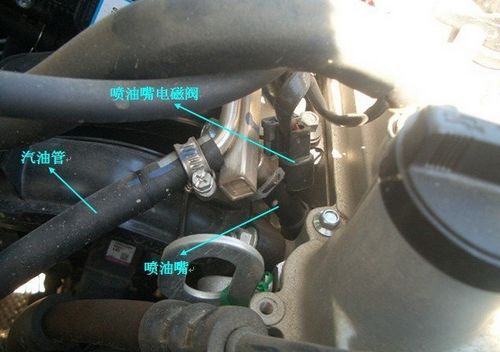
Injector: The gasoline pressurized by the gasoline pump is sprayed in the form of atomization. The nozzle hole is very small, so that the gasoline can be atomized better, but it is also easy to block, so clean the nozzle regularly. Now the car's engine is generally EFI, the so-called EFI is the abbreviation of electronically controlled fuel injection. The basic principle is that the engine control module calculates the optimal injection timing and fuel injection amount according to the information of each sensor, controls the fuel injector, injects gasoline into the end of the intake manifold, and then is sucked into the cylinder by the engine to perform work. Different from the traditional carburetor engine, the EFI engine can control the fuel quantity more accurately, the atomization is good, and the combustion is sufficient, which brings the excellent sex. My space data will be updated every day, and it can save fuel. But the advanced technology is also short-board, too complicated, and maintenance is not easy.
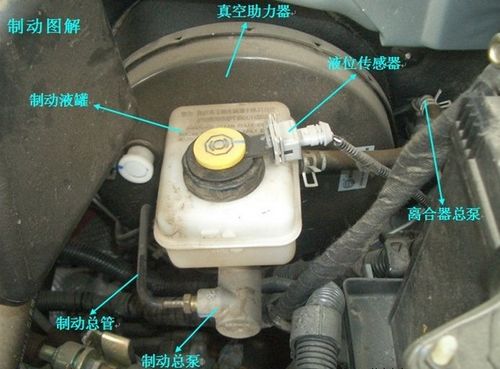
Vacuum booster: The force generated by the vacuum negative pressure of the engine intake pipe and the pressure difference of the atmospheric pressure to assist the brakes can reduce the "labor intensity" of the driver. After the engine is turned off, you can step on the brakes first and step on the power. Then step on the brakes, you will find that the strength of the milk, and how much can not step on. Without help, driving is really physical labor! This is also the reason why the engine can never be turned off during driving. Once the flame is turned off, the power will be lost, the brakes will be out of order, and the hydraulic power steering will also fail. Think about it, can't move the direction, can't stop the car, how terrible it is!
Brake master cylinder: generates brake fluid pressure, which is transmitted to each brake cylinder through the brake oil pipe.
Clutch master cylinder: When the clutch pedal is depressed, the clutch master cylinder connected to the pedal will act, generate hydraulic pressure, be transmitted along the pipeline to the clutch pump, and finally converted into a mechanical force separation clutch. The small F clutch operating system is hydraulic and shares a hydraulic oil with the brake system, so a tube is connected to the brake fluid tank.
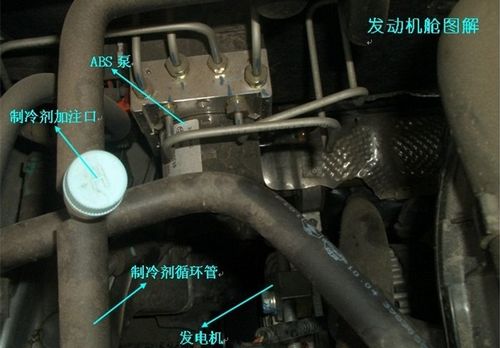
ABS pump: very important safety device !~! ABS means automatic anti-lock braking system. When braking, ABS system will automatically apply dozens of brakes per second to each wheel according to information such as speed and braking force. To prevent the tire from locking and slipping, the body is out of control. And can provide steering ability when braking, to avoid obstacles.
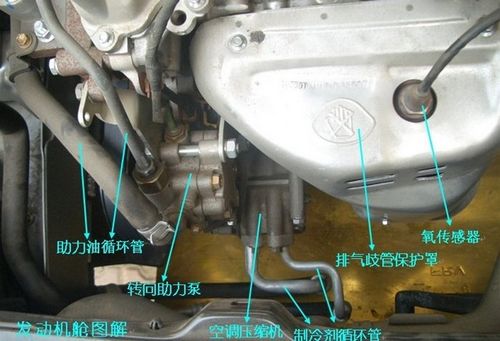
Steering booster pump: Provides hydraulic power for steering assist. Recently, some owners in the jar reflected the problem of the abnormal sound of the belt, which is the offset of the booster pump bracket, which caused the pulley of the booster pump not to be on the same plane as the other pulleys. When the belt was running, the pulley was not normally rubbed and noise was generated.
Air-conditioning compressor: Compress the vaporized refrigerant into a liquid, and then pump it into the evaporator to produce the cool we need!
Exhaust manifold: The exhaust gas generated by each cylinder of the engine is sent into the exhaust manifold through the exhaust manifold, and then discharged into the atmosphere through a three-way catalytic converter and a muffler. Because the exhaust gas of the engine is very hot, a protective shell is added here to provide insulation. Seeing that the hand type logo is not there, there is an X, meaning that you don't touch it, it will burn you~!
Oxygen sensor: Detects the oxygen content in the exhaust gas and transmits the signal to the engine control module to control the fuel injection amount so that the fuel can fully burn and reduce emissions. If there is a problem with the oxygen sensor, it is said that the engine will be unstable and the fuel consumption will increase dramatically.
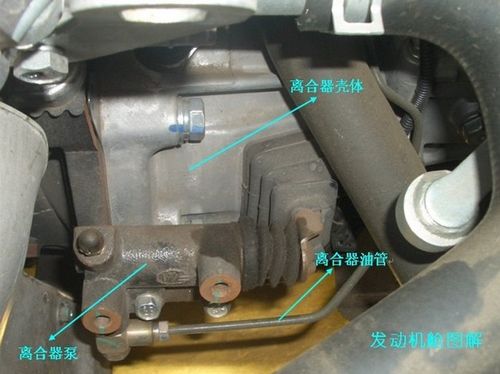
Clutch pump: The clutch of small F is hydraulically driven. The hydraulic pressure generated by the clutch master cylinder is transmitted to the clutch pump along the clutch oil pipe to generate mechanical force, push the split lever on the right side, and break the clutch. The hydraulic ratio of the straps is much better.


Gear shifting cable: One end of the cable is connected to the gear lever in the cab, and the other end is connected to the gear selection and shifting mechanism. The cable has a great influence on the feeling of shifting. If there is difficulty in hanging the file, it may be a problem with the cable.
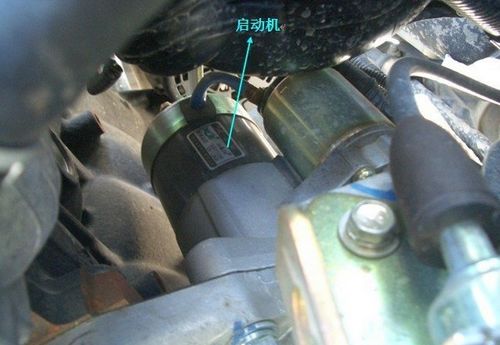
Starter: In fact, it is a small motor. When the key switch is turned to the starting position, the starter rotates, and at the same time, the engine is turned to assist the engine to start working. If it is difficult to catch a fire when starting a car, the duration of the fire should not be too long, a few seconds at a time. If the fire is not successful for several times, you should screw the key back, wait a few minutes, give the starter a cooling time, and then re-power it on. This will prevent the starter from burning out.
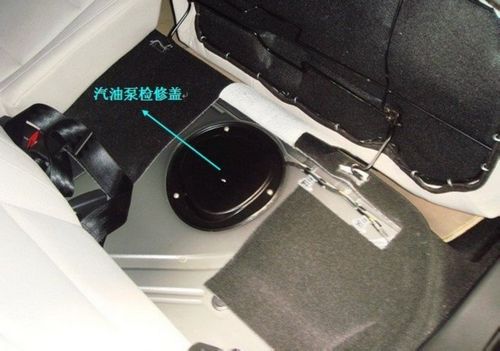
Let's take a look at the petrol pump. When the rear seats are opened, you will see a black cover with a petrol pump underneath.

After the cover is removed, the gasoline pump can be seen. It is actually installed on the fuel tank, but it is very troublesome to remove the fuel tank. Therefore, a hole is opened in this place, which can be easily replaced when the gasoline pump is damaged.
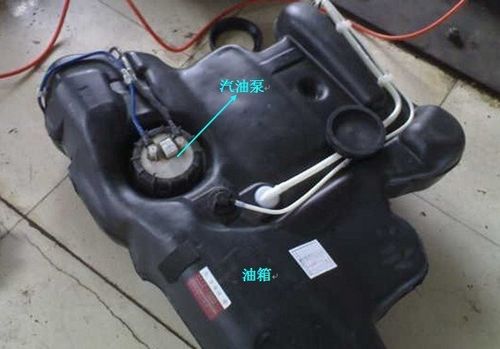
This is how the fuel tank is removed and the actual installation position of the gasoline pump can be seen.
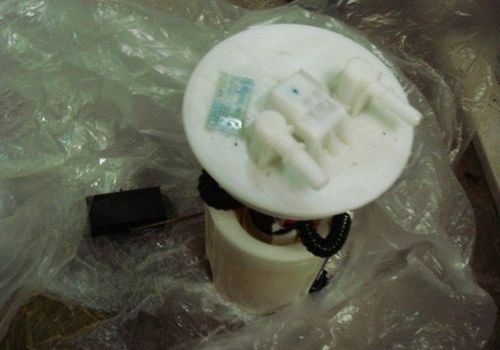
The petrol pump is removed and it looks like this! Since it is called an oil pump, its role does not have to be said to be the pumping oil. The O(∩_∩)O gasoline pump pressurizes the gasoline and delivers it to the injector through the oil supply line. Because of the pressure, the gasoline sprayed from the injector will be atomized well to be evenly mixed with the air.
One important precaution in the use of petrol pumps is to keep the oil in the fuel tank too low. Don't wait for the oil lamp to light up before you add it. Look at it almost because the gasoline pump is cooled by the gasoline in the fuel tank. If the oil is too small, the cooling effect will be worse, and the gasoline pump will be burned seriously.

Gasoline filter: installed in front of the right rear wheel, next to the fuel tank, the function is to filter out the moisture, impurities and gelatin in the gasoline, prevent the fuel system from clogging, and ensure the normal operation of the fuel supply device.
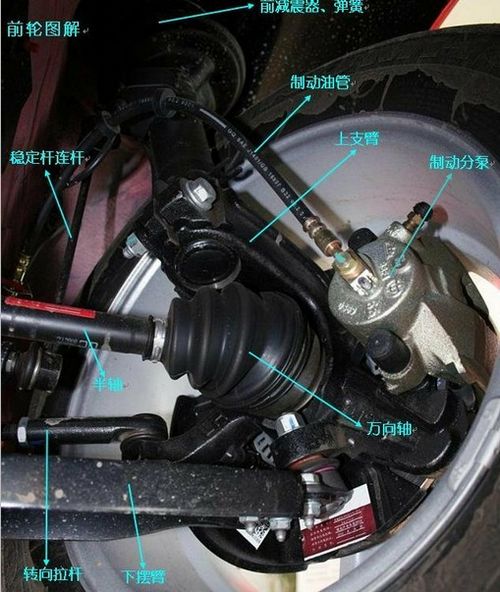
Brake hose: The force that transmits the brake pedal.
Brake cylinder: converts the hydraulic pressure of the brake fluid into mechanical force and acts on the brake caliper. The friction plate on the caliper rubs against the brake disc, converting the kinetic energy of the car into heat energy, thereby stopping the car.
Stabilizer: Reduces body roll when steering and increases handling.
Half shaft: The power of the engine is transmitted to the wheels to drive the car.
Steering lever: Controls the steering of the wheel and adjusts the toe.
Lower swing arm, upper arm: a suspension member that connects the wheel and the vehicle body.
Cardan shaft: connected between two axes, the angle of transmission between the two axes can be arbitrarily changed within a certain range. Because the front wheel is both driven and turned!
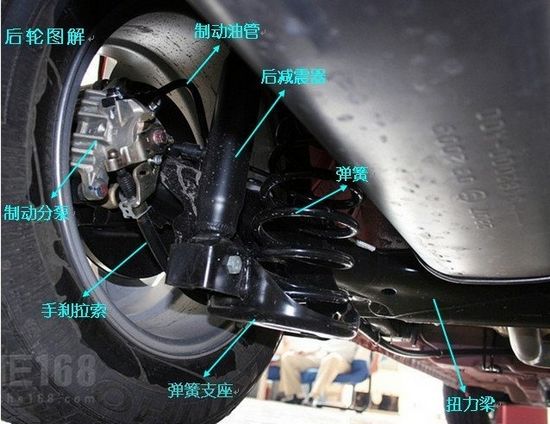
Spring: Elastic element for cushioning. This is a coil spring, the truck uses a leaf spring, and some high-end cars use an air spring.
Shock absorber: A hydraulic damping element that absorbs the energy of the road surface and suppresses the force of spring rebound after compression. It cooperates with the spring to form a shock absorption system for slowing the vibration of the vehicle body caused by uneven road surface. The damping force of the shock absorber and the spring force of the spring will produce different chassis styles after different training matches, such as sports and comfort.
Handbrake cable: When the handle brakes, the rear wheel brakes, just like the bicycle brake.
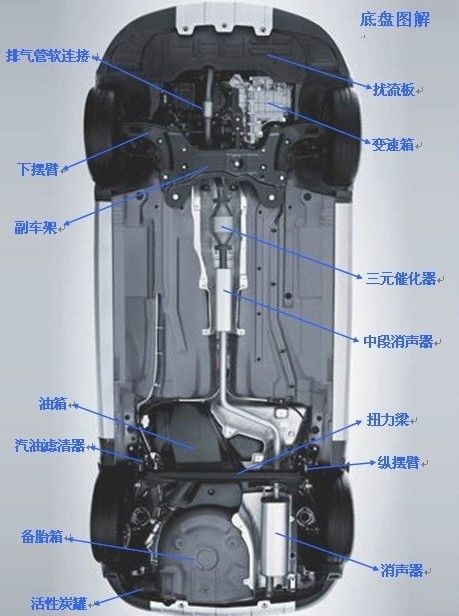
Exhaust pipe soft connection: Block the transmission of engine vibration.
Sub frame: The suspension arm that connects the lower arm and the car body.
Three-way catalytic converter: converts harmful gases such as NOX and CO in the exhaust gas into harmless gases such as N2 and CO2 to reduce emission pollution.
Muffler: Eliminates the noise of engine exhaust. Without this thing, our car would roar like a sports car.
Activated carbon canister: A small black canister installed on the right side of the rear of the car. The interior is filled with activated carbon and connected to the fuel tank to adsorb gasoline vapor. Gasoline is a volatile fuel. The fuel in the fuel tank will quickly volatilize and increase the pressure inside the fuel tank. When the pressure reaches a certain value, it will cause certain dangers. Therefore, people think that the pressure is balanced. At first, the fuel tank cap is made. The pressure limiting valve, when the pressure is higher than a certain value, the pressure limiting valve is opened to send the gasoline vapor to the atmosphere. Later, from the perspective of saving fuel and protecting the environment, a carbon canister is set, and the inside of the carbon canister is The highly adsorptive activated carbon is filled, and the excess fuel vapor in the tank is no longer discharged into the atmosphere, but a tube is introduced into the activated carbon canister. Activated carbon adsorbs fuel vapor. When the car is started, the activated carbon canister solenoid valve is opened in time to re-inject the absorbed fuel vapor into the intake manifold to save fuel and protect the environment.
Torsion beam: A component of a torsion beam semi-independent suspension that produces a torsional deformation that allows suspension performance to be between independent and non-independent suspensions. This type of suspension is characterized by low cost, high strength, small footprint, and comfortable comfort. It is mostly used in small cars. See below:
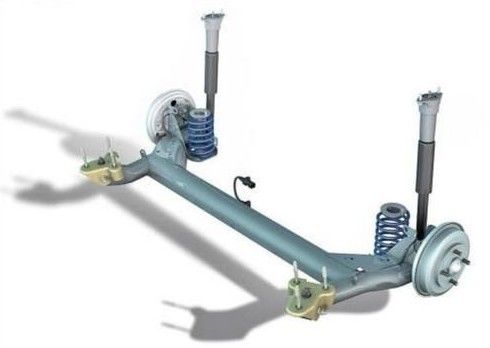
Cam Latches,Hardware Latches,Toggles Hooks,Adjustable Toggle Latches
Ningbo Hengchieh Locking Technology Co., Ltd. , https://www.hengchieh.com